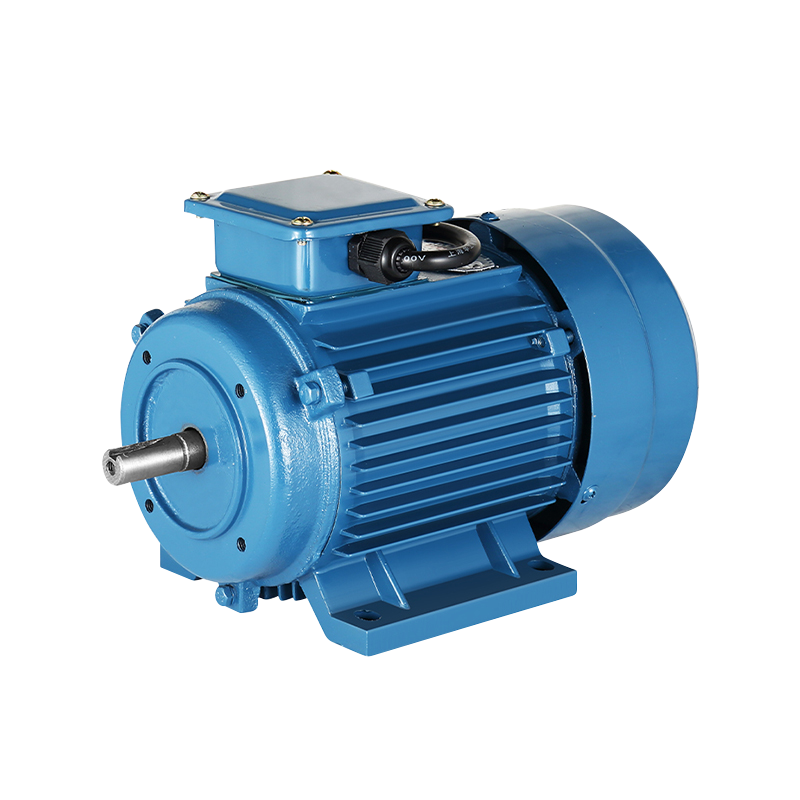Frequency Controlled Asynchronous Motor: Revolutionizing Efficiency in Modern Industries
The Frequency Controlled Asynchronous Motor is gaining prominence in various industries, setting new standards for energy efficiency, operational precision, and adaptability. As the global economy increasingly prioritizes sustainable practices and technological innovation, these motors are emerging as vital components in the drive towards more efficient and environmentally friendly industrial processes.
A Frequency Controlled Asynchronous Motor combines the robust and reliable design of an asynchronous (induction) motor with the advanced capabilities of frequency control technology. The term "asynchronous" refers to the rotor's rotational speed, which is slightly less than the speed of the magnetic field generated by the stator, a feature known as slip. This slip is crucial for torque production, making these motors highly effective in various applications.
The frequency control aspect involves using a variable frequency drive (VFD) to adjust the motor's speed by altering the frequency of the electrical power supplied to the motor. This capability allows for precise control over the motor's operational parameters, enabling it to match the specific demands of the application. The result is improved efficiency, reduced energy consumption, and extended equipment life.
Frequency Controlled Asynchronous Motors are versatile and find applications across a broad spectrum of industries. In manufacturing, they are used to power machinery such as conveyor systems, pumps, and compressors. The ability to control motor speed with precision means these motors can optimize the performance of these machines, to increased productivity and lower energy costs.
In the HVAC industry, Frequency Controlled Asynchronous Motors are integral to systems that require variable speed control, such as fans, blowers, and pumps. By adjusting the motor speed based on real-time demand, these systems can maintain climate conditions with minimal energy use. This not only enhances comfort and air quality but also significantly reduces operating costs.
The motors are also widely used in the water and wastewater treatment industries, where precise control of pumping systems is essential for efficient operation. The ability to vary motor speed helps manage water flow and pressure, reducing energy consumption and wear on the equipment. This is particularly important in processes where consistent water quality and system reliability are critical.
The Frequency Controlled Asynchronous Motor stands out for its energy efficiency. Traditional motors often run at full speed regardless of the load, to unnecessary energy consumption. In contrast, frequency-controlled motors can adjust their speed to match the load, significantly reducing power usage. This capability is particularly beneficial in applications with variable demand, such as HVAC systems and industrial processes.
Reducing energy consumption has a direct impact on lowering greenhouse gas emissions, contributing to global efforts to combat climate change. The widespread adoption of Frequency Controlled Asynchronous Motors thus supports environmental sustainability goals. Additionally, these motors help companies comply with increasingly stringent energy efficiency regulations and standards, which often mandate the use of energy-saving technologies.
The field of Frequency Controlled Asynchronous Motors is continuously evolving, driven by advancements in motor design and control technologies. One of the significant trends is the integration of smart technologies, such as IoT (Internet of Things) connectivity and advanced sensors. These innovations enable real-time monitoring and diagnostics, providing valuable data on motor performance and operational conditions.
This data can be used to implement predictive maintenance strategies, reducing downtime and maintenance costs. For example, sensors can detect signs of wear or inefficiency, prompting timely interventions before issues to system failures. Such capabilities not only enhance the reliability and lifespan of the motors but also contribute to overall system efficiency.
Another area of development is the improvement of VFD technology, making it more compact, efficient, and user-friendly. Advances in semiconductor materials and power electronics have led to VFDs with lower losses and higher power densities, which can further reduce energy consumption and improve motor control precision.
-
Feedback

 English
English 中文简体
中文简体






